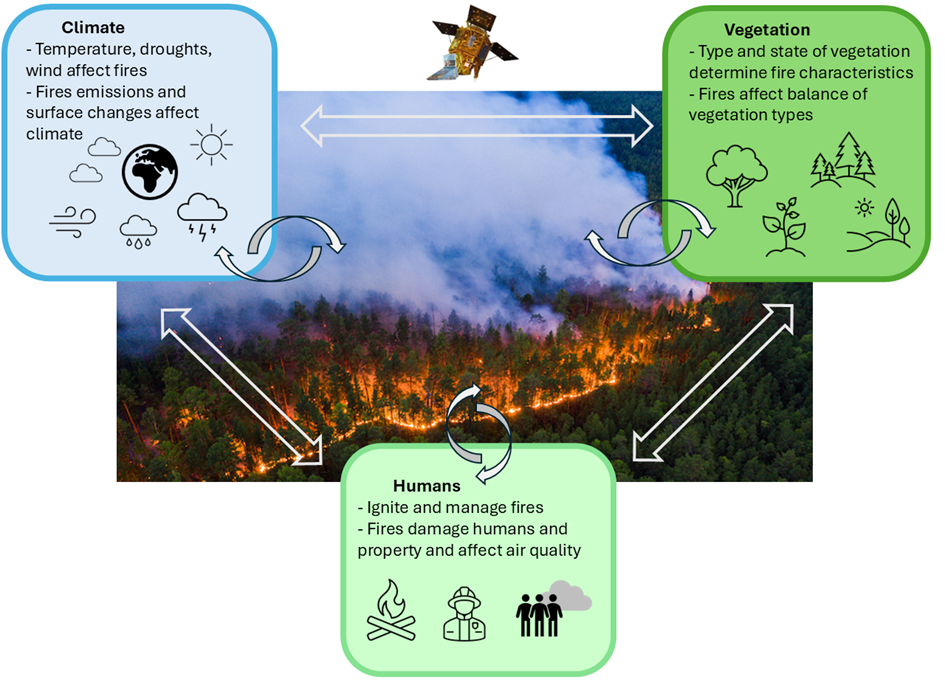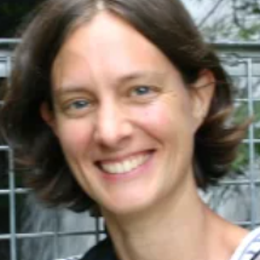A new interdisciplinary research initiative, INFLAMES, has been awarded nearly €1.8 million through the Dutch ‘Use of Space Infrastructure for Earth Observation and Planetary Research’ (GO) programme. The University of Twente is one of the co-applicants in this project, together with researchers from, among others, KNMI and other universities.
Wildfires are becoming more intense and frequent due to climate change and human activity, with far-reaching consequences for ecosystems, air quality, and the global climate. The INFLAMES project – short for Interdisciplinary (Network for) Fire Research from Low Earth Orbit Atmospheric Measurements – brings together satellite observations, computational models, and fieldwork to better understand the causes and consequences of landscape fires.
Human influences on dynamics of landscape fires
At the University of Twente’s Faculty of Geo-Information Science and Earth Observation (ITC), Marloes Penning de Vries leads the work package titled “Human influences on dynamics of landscape fires.” Together with a PhD candidate (co-supervised by promotor Anton Vrieling), she will investigate how human activities shape fire patterns in Eastern and Southern Africa, using satellite data and advanced modeling techniques.
Penning de Vries also co-supervises a PhD candidate at Vrije Universiteit Amsterdam, who will assess how wildfires contribute to urban air pollution in selected cities. This research combines satellite observations with cutting-edge air quality models.
Satellites as a key to understanding
The project leverages satellite instruments with strong Dutch involvement, including TROPOMI, SPEXone, and EarthCARE. These tools provide critical data on fire activity, emissions, and air quality. The findings will be integrated into the dynamic vegetation model JSBACH to improve future fire predictions.

Figure: Schematic of main interactions between climate, vegetation, humans and fire addressed within INFLAMES. Fire image by Greenpeace.
National collaboration and outreach
INFLAMES is a collaboration between five Dutch universities and three research institutes. In addition to its scientific goals, the project includes a strong outreach component, with three events for early-career researchers – one of which will be hosted at the University of Twente – and a summer school. Two stakeholder workshops will ensure that the project’s findings are translated into practical applications. With INFLAMES, the University of Twente contributes to a deeper understanding of the complex interplay between humans, climate, and wildfires – and to building more resilient societies in a warming world.
Contact information
More recent news
 Fri 12 Dec 2025Retrospective of the UT Climate Event 2025
Fri 12 Dec 2025Retrospective of the UT Climate Event 2025 Fri 5 Dec 2025Transforming urban policy for a healthier and safer Enschede (and other cities)
Fri 5 Dec 2025Transforming urban policy for a healthier and safer Enschede (and other cities) Fri 28 Nov 2025ITC PhD Publication Award 2025 Ceremony
Fri 28 Nov 2025ITC PhD Publication Award 2025 Ceremony Mon 10 Nov 2025Dutch spinoff launches groundbreaking global flood forecasting tool
Mon 10 Nov 2025Dutch spinoff launches groundbreaking global flood forecasting tool Wed 5 Nov 2025New Geoversity course on Geospatial Auditing launched in collaboration with the Netherlands Court of Audit
Wed 5 Nov 2025New Geoversity course on Geospatial Auditing launched in collaboration with the Netherlands Court of Audit


